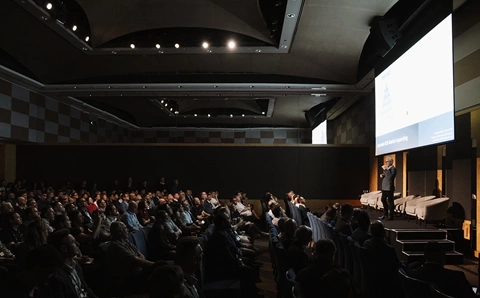Such companies will, of course, have to pay for the luxury. At the entry level, a single-screen room costs about US$120,000 plus US$9,900 a month for connection and maintenance services. Part of HP's solution--and what sets it apart--is a dedicated 45-Mbps connection to the Halo Video Exchange Network. "HVEN allows the kind of experience with a telco-neutral carrier and latency that's barely noticeable," said Podrabsky. HP is in talks with major hotels around the world to install HVEN connections, he said, where clients and branch-office personnel could go for meetings. From there, a DS3 tail circuit could connect to a customer's room.
The system also supports off-HVEN connection with H.323 devices from Tanberg and Polycom. "There's no firewall to traverse, no peering of networks is necessary; it doesn't use the customer network at all." All communications are 256-bit encrypted, and fees include unlimited access to the network.
Halo's high-quality images, omnipresent sound and realtime responsiveness made it seem as if everyone was in the same room. But as immersive as the experience was, there are still two things missing. One is eye contact. Unless people look straight into the camera when speaking, they appear on screen to be looking down rather than straight ahead. This is because the cameras, like most Webcams, are mounted above the display screen. So you can never really look someone in the eye.
More important, Halo is missing a channel program. "Channel partners are a strong part of our future strategy," Podrabsky said, adding that the HP is currently adapting a strategy to include resellers. "We will work with service partners and network service providers." He would not provide a time line for such plans to be made public, and until that time, the Test Centre withholds its recommendation of Halo.








_(11).jpg&h=142&w=230&c=1&s=1)

.jpg&w=100&c=1&s=0)
_(8).jpg&w=100&c=1&s=0)







.jpg&q=95&h=298&w=480&c=1&s=1)





